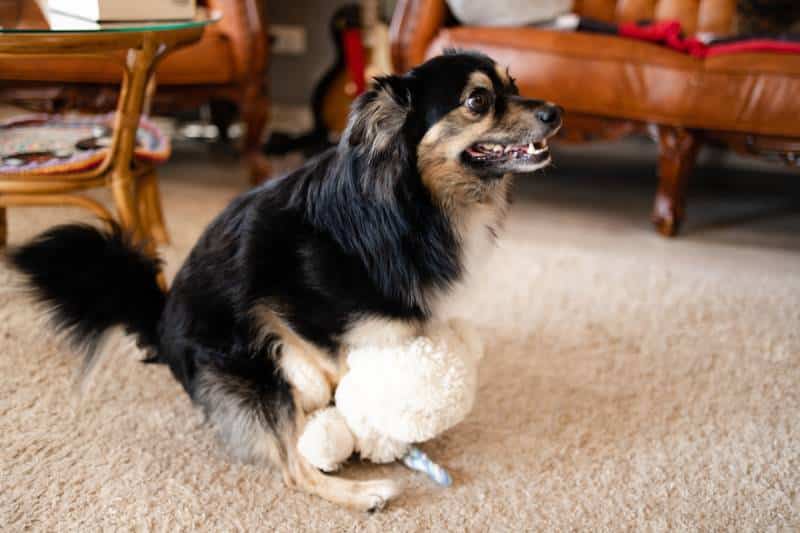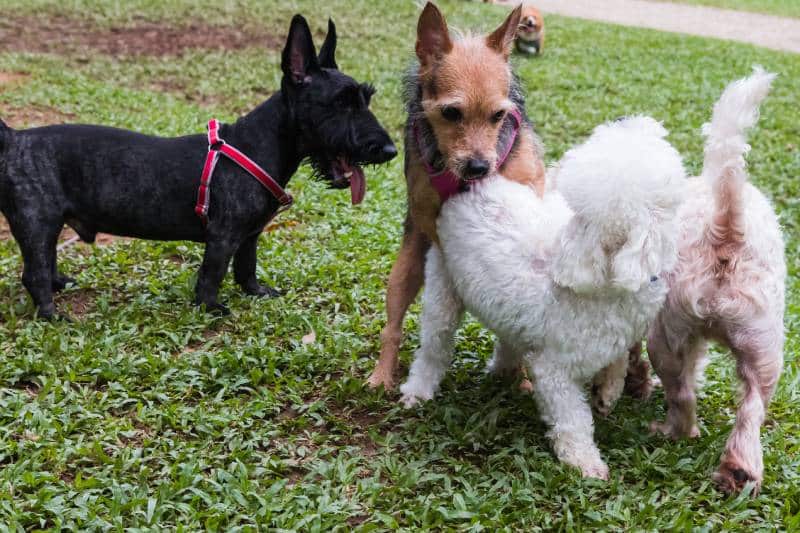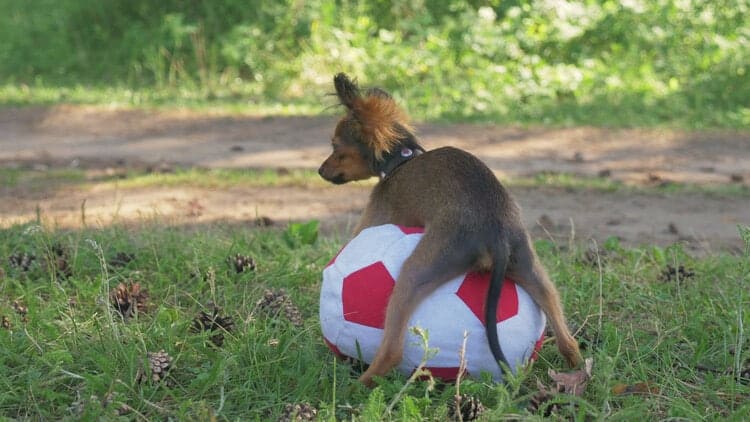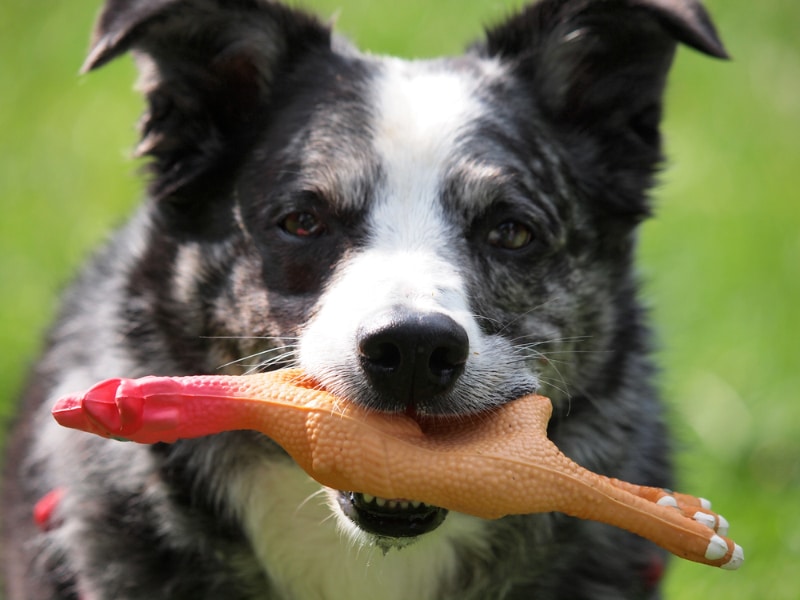Though humping is typically associated with male dogs, some female dogs also engage in this behavior, leaving their human companions perplexed. This isn’t necessarily something to worry about, though. It’s normal for female dogs to hump, and it’s not usually a sign that something is amiss (unless the dog has anxiety or a medical condition—we’ll get to this later).
We’ve put together this guide to help you get to the bottom of why your female dog is humping other dogs, pets, objects, or even you. We’ll also share some tips on how to curb the behavior.
The 5 Reasons Female Dogs Hump
1. Overexcitement
For many dogs, humping is just a response to overexcitement, especially when encountering new dogs and people. It’s normal for dogs to hump one another while playing and take turns doing so, but if a dog does it constantly or is becoming a nuisance to other dogs, it may indicate that they aren’t able to control their excitement yet.
This is more likely in puppies who are still learning about the world and adult dogs who haven’t been socialized properly, which leads to a lack of boundaries and understanding about how to play appropriately with other dogs.

2. Stress
Stress and anxiety can cause dogs to hump as a coping mechanism. Other signs of stress and anxiety in dogs include yawning, pacing, general restlessness, licking, drooling, excessive barking, panting, whining, dilated pupils, rapid blinking, pinned-back ears, a tucked-under tail, side eye, and shaking. Urinating or defecating in the house are also signs that a dog is anxious.
3. Attention Seeking
Both male and female dogs sometimes hump as a means of getting attention, especially if they’re bored. The problem here is that people unintentionally encourage the dog by responding to the humping in some way, whether that be laughing, or rushing to correct the behavior.
Whatever the response, this teaches the dog that they can get attention by humping, so it becomes a learned behavior.

4. Sexual Behavior
Contrary to common belief, dog humping is not always sexual, but sometimes, it is. Some female dogs mount males in an attempt to encourage mating. Lifting the tail to the side, urinating more, over-friendliness, agitation, play bowing, and pawing at the male are also signs that a female dog wants to initiate mating. Female dogs sometimes mount other females or let themselves be mounted by females when in heat.
5. Medical Conditions
Conditions related to hormone production may cause a dog to start humping people, animals, and/or objects. If humping is a new behavior for your dog that they never used to or rarely did before, it would be best to consult a vet about the possibility of medical issues.
Skin conditions and urinary tract infections are other potential causes of humping. The action could be an attempt to relieve the itch or discomfort associated with the conditions.

The 3 Ways to Stop a Dog Humping
While humping is a normal, common dog behavior in most cases, the best thing to do is work on modifying the behavior. Other dogs may react badly to being mounted. Here are some top tips:
1. Get Your Dog Spayed
Spaying is a procedure in which the ovaries and uterus are surgically removed to prevent female dogs from going into heat and getting pregnant. Though humping isn’t always related to sexual behavior, spaying can help reduce hormone-driven humping that happens when a female goes into heat.
Just bear in mind that dogs may continue to hump for a few months after the surgery because it takes time for the hormones to completely go away.

2. Socialization, Exercise and Desensitization
Socialization is most effective when done with dogs before the age of 14 weeks. However, if your dog is older than 14 weeks, you should still try to socialize them. If your dog is hyperactive or anxious around unfamiliar dogs they really need to be socialized. First observe other dogs at a distance your dog is comfortable with to desensitize them to the presence of other dogs. It is imperative that your dog remains calm. Once your dog is comfortable with new dogs at a distance, you can come a bit closer and then start some slow on leash introductions. If at any stage your dog becomes too excited you should remove them from the situation. Making sure your dog gets enough exercise prior to socializing them can help, pent up energy is not good for anyone in this situation.
3. Redirecting and Positive Reinforcement
Redirecting involves distracting your dog with something else when they’re about to hump. For example, if your dog loves a specific toy, use that to distract them when they start to paw, whine, or pant—these are warning signs of mounting. Alternatively, you can teach a command like “leave it” to use when your dog starts getting a little too friendly with objects, other pets, or guests. Reward them for doing the right thing. Treats and games are good rewards. Once the humping has started, try to avoid reinforcing the behavior in any way.

Conclusion
While it can be embarrassing when it happens, occasional humping is very common and just part and parcel of being a dog—male or female. However, it’s a problem when it becomes a nuisance to you, your guests, or other animals.
If redirection techniques and training commands don’t work despite your best efforts, you may need to recruit a professional behaviorist for help. It’s also a good idea to speak to your vet to rule out medical causes like hormone problems, skin issues, and UTIs.
Featured Image Credit: Robert Petrovic, Shutterstock











